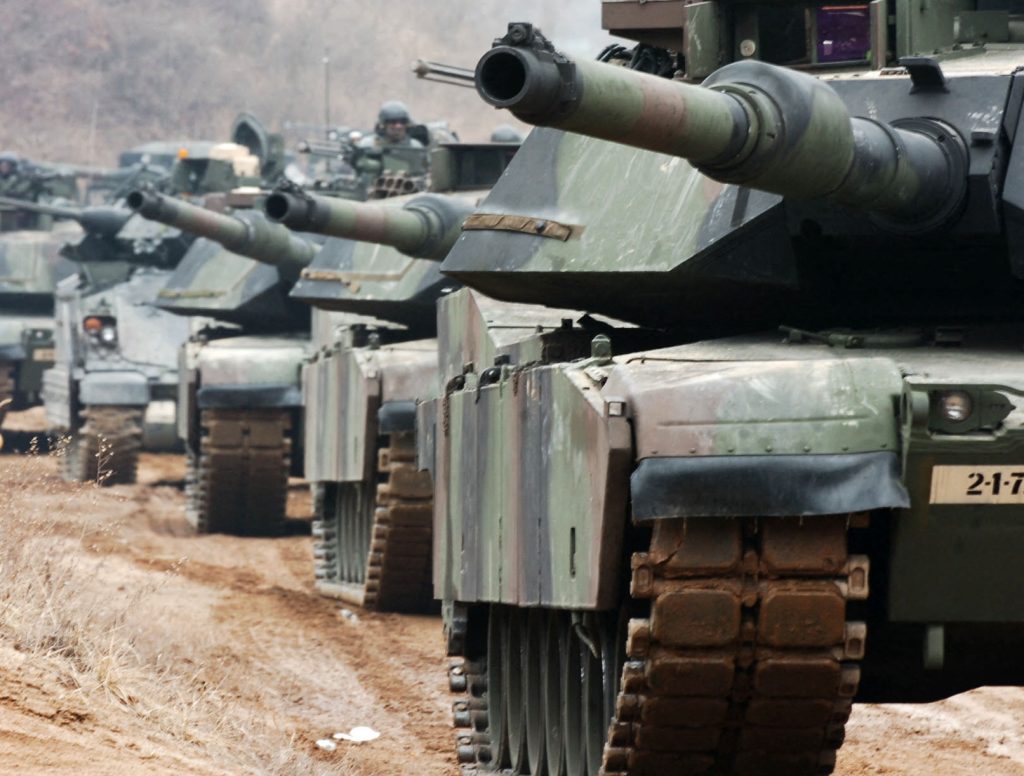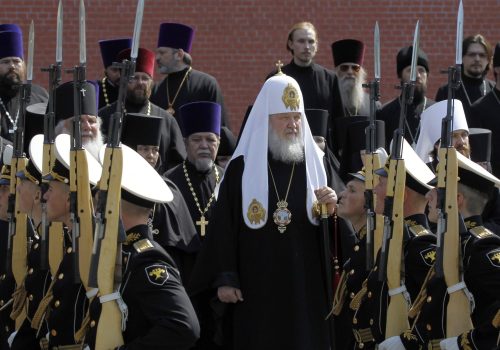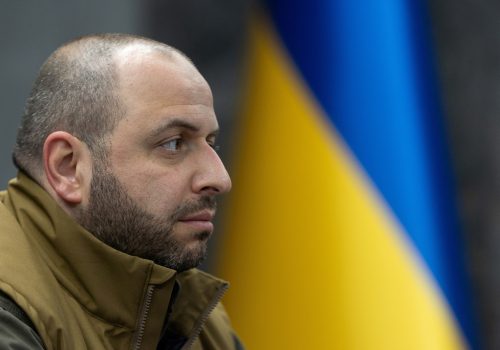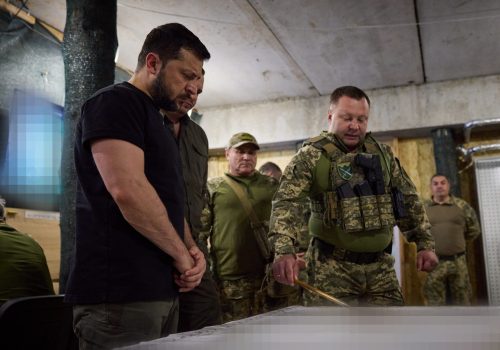The first US M1 Abrams tanks have arrived in Ukraine, Ukrainian President Volodymyr Zelenskyy announced early this week. Pentagon officials confirmed the delivery, with a spokesperson commenting that “the mere presence of Abrams tanks serves as a potent deterrent.”
This is the initial batch of an anticipated 31 Abrams tanks which Ukraine will receive in line with a decision announced by US President Joe Biden in January 2023. The Abrams is widely regarded as among the most powerful tanks currently operating and is seen as significantly more advanced than the bulk of the tanks used by the Russian military. With Ukraine set to receive enough US tanks to equip a single battalion, few expect the Abrams to have a major impact on the battlefield. However, these deliveries represent an important addition to Ukraine’s growing arsenal of Western tanks.
During the first ten months of Russia’s full-scale invasion, Ukraine’s international partners remained cautious over the delivery of modern battle tanks. Instead, a handful of countries including Poland and the Czech Republic provided significant quantities of extensively refurbished Soviet era tanks. These tanks were regarded as particularly suitable due to Ukraine’s familiarity with their operating systems and the availability of spare parts.
Ukrainian requests for modern battle tanks were finally answered in early 2023. Britain was the first partner country to commit, announcing in mid-January that it would be sending Challenger 2 tanks to Ukraine. Berlin announced publicly that they would not move on tanks until Washington agreed to send Abrams. Once a deal was struck, Germany then followed suit, agreeing to deliver Leopard tanks and allowing other countries to do likewise.
All three models represent a significant upgrade on the armor previously available to the Ukrainian military or the Russian army. They offer a range of practical advantages including better protection, higher mobility, night vision capabilities, more accurate firepower, and greater range.
Stay updated
As the world watches the Russian invasion of Ukraine unfold, UkraineAlert delivers the best Atlantic Council expert insight and analysis on Ukraine twice a week directly to your inbox.
While Ukrainians have welcomed the delivery of modern battle tanks as a major breakthrough for the country’s war effort, a larger debate is also underway over how and under what circumstances tanks will be used in the modern battlespace going forward. This debate, at times disregarding Ukraine’s lack of air superiority and Russia’s poor strategy of massing tanks, draws on the heavy losses in tanks witnessed over the past nineteen months of Russia’s full-scale invasion to argue that advances in missile and drone technologies are rendering tanks obsolete on the modern battlefield.
Rob Lee, a senior fellow at the Foreign Policy Research Institute, is one of a number of experts critical of recent efforts to condemn tanks to the military graveyard. “It is too soon to write off the tank, and we should resist jumping to other sweeping conclusions about the future of warfare based on a conflict whose lessons are not yet clear,” he noted in September 2022.
Many analysts have also pointed out that the catastrophic tank losses suffered by Russia during the initial phase of the invasion can be chalked up to how the tanks were used rather than indicating any more fundamental issues with the role of tanks in modern warfare. Russian commanders have been accused of poor logistical planning and preparation, while columns of tanks were routinely deployed in vulnerable positions without sufficient infantry support to protect them from anti-tank weapons or the growing threat of drone strikes.
Advocates of tank warfare argue that poor strategy should not obscure the need for heavy armor in cutting through a line or holding territory once liberated. With the right strategic approach and the right air defense assets, tanks can continue to play a crucial battlefield role. Abandoning tanks entirely could also have grave consequences for troops on the ground. “Without tanks, a military involved in a large-scale ground war would have to rely on armored personnel carriers and infantry fighting vehicles to fill that same role, which would lead to a greater percentage of catastrophic losses,” observed Rob Lee.
Eurasia Center events

Ukraine’s expanding fleet of modern battle tanks have so far been sparingly deployed. According to reports in late August, Ukraine had lost just five of its 71 Leopard 2 tanks in the thirteen weeks since the start of the country’s long-anticipated counteroffensive. Ukrainian commanders are clearly waiting for the right moment to use their enhanced tank force. While Russia’s well-prepared defensive positions in southern Ukraine represent a formidable obstacle, the flat and open terrain of the region is potentially ideal for tanks if Ukrainian forces are able to break through the Russian lines.
So far, progress has been painfully slow but fairly steady, with deep minefields needing to be cleared at every step before personnel carriers and tanks can move through. Limited breaches have been achieved but remain heavily contested, with Russia moving substantial reinforcements to block further Ukrainian advances. The density of minefields close to Russia’s first defensive lines means that Abrams tanks and other modern Western armor are currently unable to play a prominent role in offensive operations. That will change if Ukraine succeeds in consolidating its position beyond Russia’s initial line of defense and pushes into less heavily fortified areas.
Ukraine’s Abrams tanks have the technical capabilities to exploit any breakthroughs, but logistical challenges should not be underestimated. The Abrams model is notorious for high fuel consumption and will therefore be limited in range by the proximity of fuel supplies. Meanwhile, all of Ukraine’s Western tanks use different ammunition, creating further potential supply headaches in the event of rapid advances.
Some critics have suggested that the delivery of 31 Abrams tanks to Ukraine is little more than a token gesture. However, even in relatively small quantities, this sophisticated fighting machine significantly enhances Ukraine’s offensive capabilities. Much is likely to depend on the ability of Ukrainian commanders to integrate these US-made vehicles into existing units and deploy them effectively in complex combined arms operations.
The arrival of Abrams tanks on the Ukrainian battlefield will not transform the course of the war. However, if used alongside other recently delivered modern battle tanks and in conjunction with infantry, artillery, drones, and air cover, Abrams tanks could help Ukraine achieve its current goal of striking south and cutting the land bridge linking Russia to Crimea.
Olivia Yanchik is a program assistant at the Atlantic Council’s Eurasia Center.
Further reading
The views expressed in UkraineAlert are solely those of the authors and do not necessarily reflect the views of the Atlantic Council, its staff, or its supporters.

The Eurasia Center’s mission is to enhance transatlantic cooperation in promoting stability, democratic values and prosperity in Eurasia, from Eastern Europe and Turkey in the West to the Caucasus, Russia and Central Asia in the East.
Follow us on social media
and support our work
Image: Abrams tanks pictured in a file photo. (Photo by US Army via ABACAPRESS.COM)




